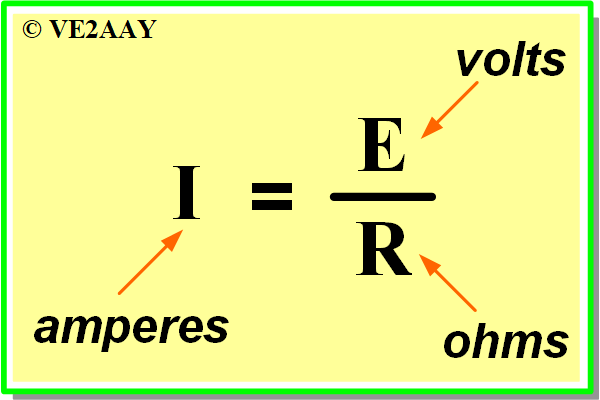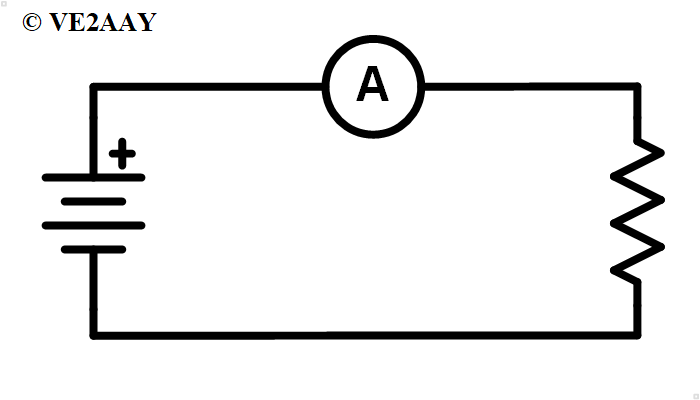Ohm's law
Ohm's law
Preamble
Ohm's Law resembles other laws of physics and states what will be the effect of a force depending on its magnitude and opposition encountered.
It seems reasonable to imagine that the stronger the force, the larger the effect, and, the greater the opposition, the smaller the effect.
Analogy
You need to move a vehicle which ran out of gas:
- The more able bodies available to push, you will gain speed more readily: more force, more speed.
- If the parking brake (hand brake) is partially engaged of if snow/mud hampers your efforts, movement will be slowed: more friction or opposition, less speed.
To return to electricity, the force, the friction and the speed become voltage, resistance and current.
Ohm's Law in words:
"The current ( I ), in a circuit, is proportional to voltage ( E ) and inversely proportional to resistance ( R )."

- Given that voltage is the force which pushes the current, the higher the voltage, the greater the current, and this, in the same proportions: e.g., if voltage doubles, current doubles.
- Inversely, resistance opposes current flow, the higher the resistance, the smaller the current, and this, in the inverse proportion: e.g., if resistance doubles, current is halved.
- The statements above are conveyed by this equation: I = E ÷ R or I = E / R .
- The units are Ampere, Volt and Ohm (Ω).
Sample calculations:
What current will a 24 Ω resistance draw from a 12-volt source?
Answer: I = E ÷ R = 12 V ÷ 24 Ω = 0.5 amperes.
What would be the new current in that same circuit if resistance was reduced to 12 Ω?
Answer: I = E ÷ R = 12 V ÷ 12 Ω = 1 ampere.
Important note:
Quantities must be expressed in base units; watch out for kilohms and milliamperes.
[ Two other permutations of Ohm's Law exist, some authors choose a different representation. It matters little as long as the same understanding can be achieved. ]
[ Certain authors use "V" as a symbol for the voltage, while Europeans prefer letter "U". ]
Spend some time interacting with the applet below to see how Voltage (E) and Resistance (R) influence current (I) read on an ammeter. This simulation of a lab experiment offers two sliders to alter the variables …
Note: your browser lacks support for advanced JavaScript features.
\

